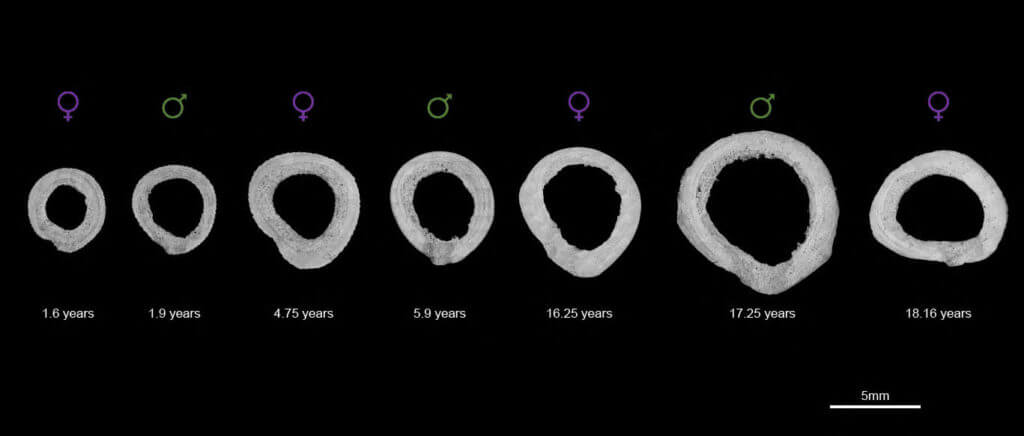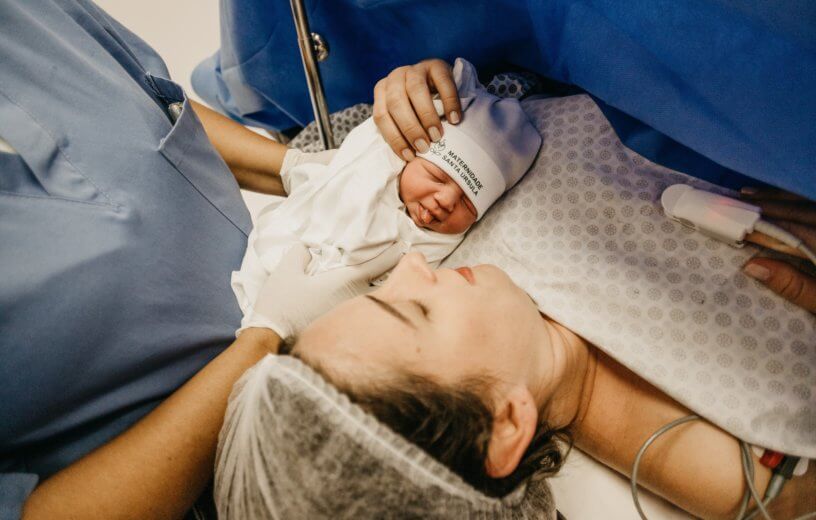NEW YORK — Having a baby permanently changes the make-up of a woman’s bones, a new study reveals.
A team of anthropologists discovered that females who have given birth have lower levels of calcium and phosphorus in comparison to males or females who have not been pregnant. Their bones also experienced a significant drop in magnesium as a result of breastfeeding.
However, while other studies show that a loss of calcium and phosphorus could lead to weaker bones, these new findings didn’t look at the health implications of the decrease of these vital minerals. Instead, the work illuminates how dynamic bones are, changing and evolving during significant life events.
“A bone is not a static and dead portion of the skeleton,” says study author and NYU anthropologist Shara Bailey in a media release. “It continuously adjusts and responds to physiological processes.”
Scientists have established that menopause can have an effect on women’s bones, but the effect of giving birth has been unclear. To gather these results, researchers studied the growth rate of the lamellar bone in the thigh of both male and female primates.
The lamellar bone is the main type of bone in an adult skeleton and is ideal for this type of investigation, as it evolves over time and leaves biological markers of these changes.
“Our findings provide additional evidence of the profound impact that reproduction has on the female organism, further demonstrating that the skeleton is not a static organ, but a dynamic one that changes with life events,” explains Paola Cerrito, who led the research project as a doctoral student in NYU’s Department of Anthropology and College of Dentistry.

Signs of giving birth ‘written in the bones’
To study these bones, researchers used electron microscopy and energy-dispersive X-ray analysis to look at the chemical composition of tissue samples from the bones. This method allowed scientists to work out the changes in levels of calcium, phosphorus, oxygen, magnesium, and sodium.
MORE: Best Prenatal Vitamins of 2022: Top 4 Brands Most Recommended By Expert Websites
The primates they studied lived in Sabana Seca Field Station in Puerto Rico and died of natural causes.
“Our research shows that even before the cessation of fertility the skeleton responds dynamically to changes in reproductive status,” says Cerrito, now a research fellow at ETH Zurich. “Moreover, these findings reaffirm the significant impact giving birth has on a female organism—quite simply, evidence of reproduction is ‘written in the bones’ for life.”
The study is published in the journal PLoS ONE.
South West News Service writer Alice Clifford contributed to this report.


Now they’re gonna be complaining about this, blaming men, etc.
A more useful study would be to look at whether older women are more likely to suffer from osteoporotic fractures if they were mothers compared to if they were childless. Because, at the end of the day, outcomes are what matter.
Changes in calcium and phosphorous after pregnancy and breastfeeding are interesting, but only important if they have a measurable impact on health.